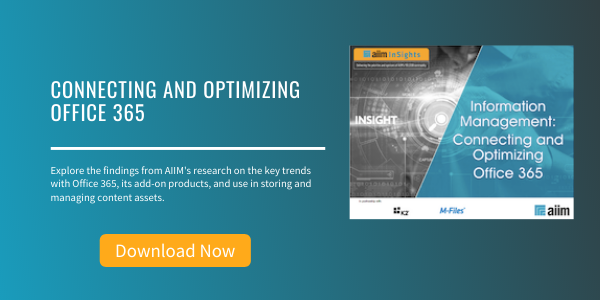
7 Tips to Unstick Your SharePoint Implementation
Many organizations continue to find themselves in a state of struggle when implementing SharePoint. However, all indications suggest that initially, it is not the fault of the technology, but the failure of the organization to properly address information governance prior to implementing the technology. SharePoint will not automatically organize information in ways that meet compliance requirements, as it is not and cannot be aware of the requirements. It is the human element of a SharePoint environment that must know and understand the rules, set up the framework for the organization, and then align SharePoint to support those requirements and policies.
So are users deserting SharePoint at the rate some might want us to believe? The answer, according to our survey, is no, and in fact, many are considering incorporating the next generation of SharePoint, SharePoint 2016. More than half of those we surveyed are committed to building and extending SharePoint with a strategic focus for quite a while yet.
What to Do When Your SharePoint Implementation Feels Stuck
- Tip #1 -- If your SharePoint deployment is stalled, or failing to add new value, identify the reasons, and develop a plan of action to resolve them.
- Tip #2 -- Confirm with Senior Management what role SharePoint plays in the organizational strategy for ECM, DM, RM, and collaboration, then focus on those areas. Plan and budget for training and system enhancement.
- Tip #3 -- While technology training is needed for your users, do not discount the benefit from more generic training in content and records management practices. This will help correct previous mistakes with content classification, metadata and taxonomies, and better position your organization to align with SharePoint.
- Tip #4 -- Develop or refine your information governance (IG) framework, and use this to see where you have gaps in your SharePoint capability, particularly with regards to records management.
- Tip #5 -- Look for ways to integrate important emails into SharePoint, incorporating auto-classification to simplify user requirements.
- Tip #6 -- Evaluate access to SharePoint remotely or from mobile devices and look for ways to enhance this capability. This may be an important driver for a move to the cloud, most likely in a hybrid model that retains some reassuring on-premise security.
- Tip #7 -- Link SharePoint to your other enterprise systems, allowing greater accessibility to enterprise information and simplifying business processes that involve both transactional and unstructured content.
Conclusion
For many, it will be a team effort, not an IT only project, leading us to believe that there is serious consideration now being taken in relation to establishing a solid information ecosystem, built within a well-defined framework, and aligned with SharePoint as a primary user portal. The indicators are clear that SharePoint can be – and for many today, is – a platform upon which ECM, DM, RM, and collaboration can be built, implemented, and expanded. Do not rely solely on the technology. Establish and enforce strong IG policies and processes. Seek guidance and expertise to fill in those areas where your organization is weak. Most of all, keep things moving.
About Bob Larrivee
Bob is the President and Founder of Bob Larrivee Consultancy. An internationally recognized Subject Matter Expert and thought leader with over thirty years of experience in the fields of information and process management, Bob is an avid techie with a focus on the application of advanced technologies to enhance business operations.



